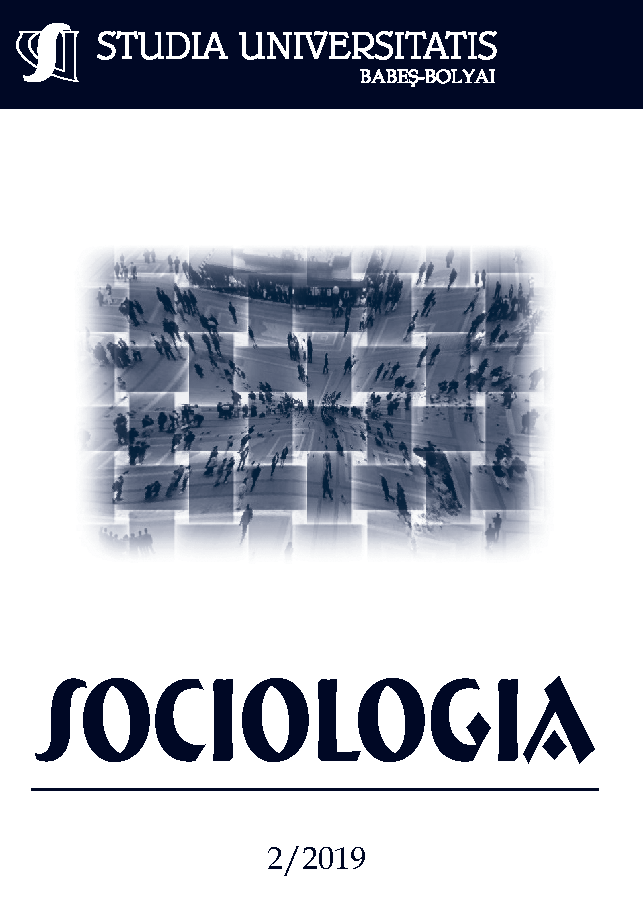TRANSFORMING NARRATIVES: REACTION, CONTEXT AND THE EMERGING (IM)-POSSIBILITIES OF SOCIAL DISCOURSE ON ART IN CLUJ-NAPOCA
DOI:
https://doi.org/10.2478/subbs-2019-0010Keywords:
social art and discourse, reaction, Paintbrush Factory, creative city, gentrificationAbstract
The aim of this article is to comprehend the register of existence and the developing of social art practices and discourses in Cluj-Napoca, citing the example of the contemporary art space The Paintbrush Factory, established in 2009. Analysing the operation mode/modus operandi of artists, curators, and cultural agents of Cluj-Napoca, I study the creative pattern based on reaction as a response to the undergoing changes within the socio-political environment of the city as well as those on a global scale. The wider expansion of the urban regeneration theory, that attributes an economic growth factor to culture (based on the existence of creative industries), persuades the local authorities to create a new narrative of a Cluj-Napoca based on the image of a creative city. The Paintbrush Factory is precisely the success story – with a grassroots background, and international standing – that Cluj-Napoca Town Hall needed to legitimise its new development project that sought to put the city on Europe’s map. This ambition of the authorities is reflected in the application for the title of European Cultural Capital 2021. The story of the Paintbrush Factory mirrors this precise transformation of the city, which sees the industrial production being replaced by symbolic production. During this process factories are literally replaced by IT firms and adjacent services, while The Paintbrush Factory that had benefited from a long-term rental of a factory space is eventually displaced in this massive gentrification course of the city.References
Da Costa, Dia (2016). Politicizing creative economy: activism and a hunger called theater. University of Illinois Press.
Florida, Richard (2012). The rise of the creative class. Basic Books.
Florida, Richard (2013). More losers than winners in America’s New Economic Geography. Citylab. https://www.citylab.com/ (29.11.2019).
Hurducas, Iulia (2016). Reconstrucţia fabricii de pensule în Fabrica de Pensule, [The Reconstruction of the Paintbrush Factory in The Paintbrush Factory]. https://fabricadepensule.ro/hotspotart/media/publicatii/ (10.09.2019).
Huffpost (2017). Here Are The 12 Cities That Will Shake Up The Art World In The 21st Century. https://www.huffpost.com (22.09.2019).
Jean, Starobinski (1999). Action et réaction: Vie et aventures d’un couple. Editions du Seuil.
McRobbie, Angela (2016). Be creative: Making a living in the new culture industries. Polity Press.
Mircan, Mihnea. History defeated. The art of Duo van der Mixt. http://www.2020.ro (15.11.2019).
Panait, Laura (2012). Grupul Mindbomb [Mindbomb Group]. http://www.e-cart.ro/longapril/3/ (06.09.2019).
Peck, Jamie (2007). The creativity fix. Eurozine. https://www.eurozine.com/ (29.11.2019).
Năsui, Oana (2017) (Edt). Noii industriași, creativii, [The New industrialists, the creatives]. Postmodernism Museum.
Rancière, Jacques (2008). Le spectateur émancipé. La Fabrique éditions.
Vincze Eniko, Zamfir George (2017). Locuinte publice: raspuns la criza locuirii [Public housing: answer to the housing crisis]. Caramida. http://casisocialeacum.ro (29.11.2019).
Ziarul Financiar (11.01.2012). Infografice - Evoluţia salariului mediu net din 1990 până în prezent [Infographics - The Evolution of Net Average Salary from 1990 to the Present]. https://www.zf.ro (06.09.2019).
Zukin, Sharon (1996). The cultures of cities. Wiley-Blackwell.
Documents:
Nettime.org - Online Info on Contemporary art projects Archive, Temps d’Images Festival - online Archive.
Banca Mondială (2017), Orașe Magnet, Migrație și navetism în România, [Magnet Cities, Migration and Commuting in Romania].
Primaria Cluj Napoca (2015), Strategia de dezvoltare a municipiului Cluj Napoca, 2014-2020, [Cluj-Napoca City Hall, Municipal Development Strategy, 2014-2020].
Cluj Capital of Culture 2021 Association (2016), Application form ECoC.
Downloads
Published
How to Cite
Issue
Section
License
Copyright (c) 2019 Studia Universitatis Babeș-Bolyai Sociologia

This work is licensed under a Creative Commons Attribution-NonCommercial-NoDerivatives 4.0 International License.






